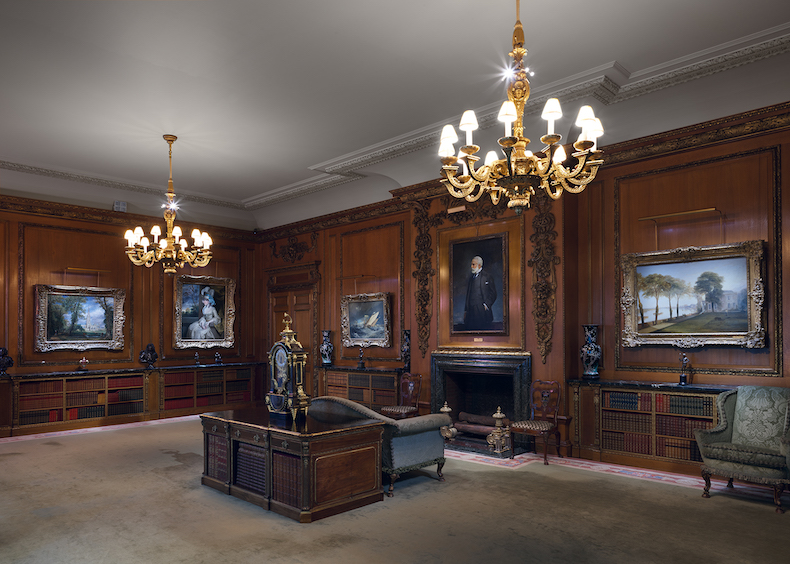Frick Collection, New York
Reopened April 2025
A five-year, $220m restoration and expansion has scarcely disrupted the Frick Collection’s longstanding illusion that the original owners will soon return from another Grand Tour shopping spree. In the 1910s, the block-long limestone compound was commissioned for the coal and steel tycoon Henry Clay Frick and his family. In 1935, it was enlarged for adaptation into a museum and library. By the 2000s, the collection had outgrown its home, but some overly obtrusive proposals for expansion caused controversy and had to be scrapped. The museum then set out, with a team led by the architect Annabelle Selldorf, to upgrade existing spaces and pack new limestone wings with rooms for public programmes, changing exhibitions, offices, conservation equipment and eateries.
Rainbows of veiny marble pave the new corridors and stairs, and belowground, a foyer lined in corrugated wood leads to an egg-shaped auditorium. The public can, for the first time, ascend to the Frick family’s upstairs quarters via a grand carpeted staircase, where reliefs of musical putti in togas frolic amid organ pipes. In the new and old galleries, familiar standouts by artists including Rembrandt, Vermeer, Ingres and Manet have been interwoven with contemporary art installations, recent acquisitions and pieces from storage, such as Renaissance bronze medals, enamelled pocket watches and Chinese and European porcelain. City grime has been swabbed away from original milky skylights, lavishly carved woodwork, and gleaming chandeliers and doorknobs. The museum’s gardens, with sunburst motifs on pebbly paths, have been newly replanted with hydrangeas and hornbeams. Limestone armless caryatids from the 1910s, which had been warehoused in the 1930s, stand sentinel once again in an entry hall.
Visitors (many of whom have, since the April reopening, queued around the block) can be seen closely examining the newly restored 1910s details, even down to the velvety upholstery, shimmery wallcoverings, and tasselled window drapes. The public, amid all the museum’s new amenities, is noticeably more aware of how the Fricks lived.

Eve M. Kahn, author of, most recently, Queen of Bohemia Predicts Own Death: Gilded-Age Journalist Zoe Anderson Norris (Fordham University Press).

